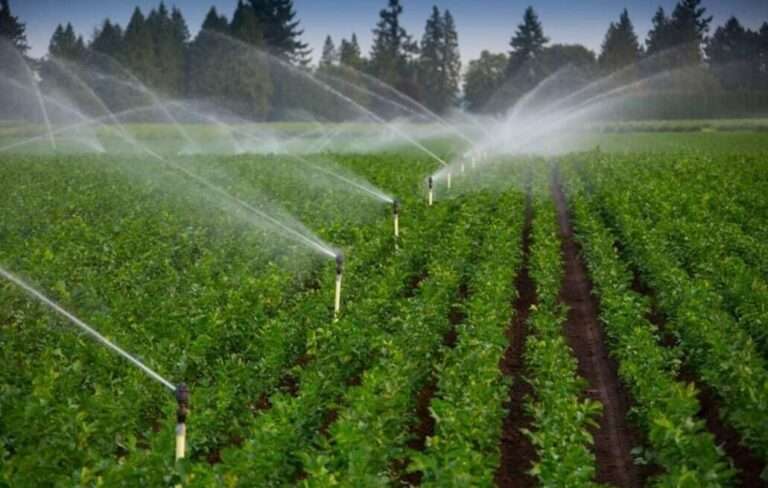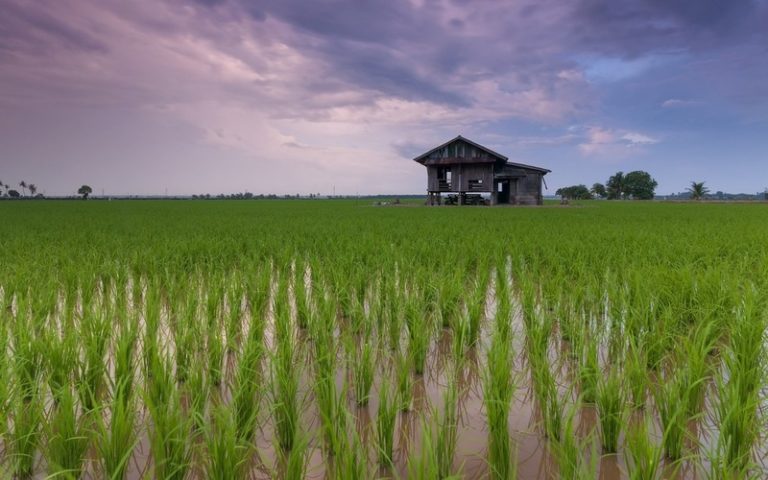Digital Agronomy: Revolutionizing Agriculture with Modern Technologies
I. Introduction
A. Explanation of Digital Agronomy
Digital agronomy is a modern approach to agriculture that involves the use of digital technologies, such as sensors, drones, and data analytics, to optimize farming practices. It leverages the power of technology to provide real-time data and insights to farmers, enabling them to make more informed decisions and improve the efficiency, productivity, and sustainability of their operations.
B. The Importance of Digital Agronomy in Modern Agriculture
Digital agronomy has become increasingly important in modern agriculture due to its ability to address many of the challenges faced by farmers today. These challenges include reducing waste, improving soil health, increasing productivity, and meeting the growing demand for food while minimizing environmental impacts.
c. Thesis Statement
This article aims to explore the concept of digital agronomy, its advantages, applications, challenges, and future prospects in modern agriculture.
II. What is Digital Agronomy?
A. Definition
Digital agronomy is a combination of digital technologies, data analytics, and agronomic practices that help farmers optimize their farming operations. It uses various tools, such as sensors, drones, satellite imagery, and data analytics, to collect and analyze real-time data on soil, weather, crops, pests, and other factors that impact crop production.
B. Advantages of Digital Agronomy in Agriculture
Digital agronomy provides several advantages over traditional farming practices, such as:
- Improved efficiency and productivity by reducing waste and optimizing resource use.
- Enhanced sustainability by reducing environmental impacts and improving soil health.
- Increased profitability by reducing costs and increasing yields.
C. Examples of Digital Agronomy Technologies
Some of the commonly used digital agronomy technologies include:
- Sensors: Used to monitor soil moisture, temperature, nutrient levels, and other parameters.
- Drones: Used to collect aerial imagery and data on crop health, growth, and yields.
- Satellite Imagery: Used to provide a bird’s-eye view of the farm, identifying areas of high or low productivity.
- Data Analytics: Used to analyze data and generate insights to support decision-making.
III. The Role of Data in Digital Agronomy
A. Importance of Data in Digital Agronomy
Data is at the heart of digital agronomy. It is collected, processed, and analyzed to provide farmers with the information they need to make informed decisions. Data helps farmers identify patterns and trends, optimize resource use, and improve crop yields.
B. Types of Data Used in Digital Agronomy
The types of data used in digital agronomy include:
- Soil data: pH, moisture content, nutrient levels, and texture.
- Weather data: Temperature, precipitation, wind speed, and humidity.
- Crop data: Growth rate, yield, and health.
- Pest and disease data: Type, severity, and spread.
C. Collection and Analysis of Data in Digital Agronomy
Data is collected through various methods, such as sensors, drones, and satellite imagery. Once collected, the data is analyzed using data analytics tools to identify patterns, trends, and insights that can be used to optimize farming practices.
IV. Applications of Digital Agronomy
A. Precision Agriculture
Precision agriculture involves using data and technology to optimize planting, harvesting, and other farming practices. It uses tools like GPS mapping, yield mapping, and variable rate technology to find and control differences in a field, which cuts down on waste and makes things run more smoothly.
B. Crop Monitoring and Management
Crop monitoring and management involve using data and technology to keep an eye on how crops grow and how healthy they are, so that problems can be found and fixed before they get worse. It uses tools such as drones, sensors, and satellite imagery to collect data on crop health, growth, and yields.
C. Soil and Water Management
Soil and water management involve using data and technology to optimize irrigation and fertilization practices, reducing water waste, and minimizing the use of chemical inputs. It uses tools such as soil sensors, moisture probes, and weather data to provide real-time information on soil moisture, nutrient levels, and weather patterns, enabling farmers to make more informed decisions about irrigation and fertilization.
D. Livestock Management
Digital agronomy can also be used to manage livestock by giving real-time information about the health, behavior, and performance of the animals. It uses tools like wearable sensors, GPS tracking, and data analytics to keep an eye on the health of animals, make sure they get enough food and water, and stop diseases from spreading.
E. Pest and Disease Management
Digital agronomy can help farmers identify and manage pests and diseases more effectively, reducing crop losses and minimizing the use of pesticides. It uses tools such as satellite imagery, drones, and sensors to monitor crop health, identify pest and disease outbreaks, and provide targeted interventions.
V. Challenges of Digital Agronomy
A. Technical Challenges
Digital agronomy involves complex technologies that require specialized knowledge and expertise to operate. This can be a barrier to adoption, especially for smaller farms or farms located in remote areas.
B. Privacy and Security Concerns
Digital agronomy involves the collection and storage of sensitive data, such as crop yields, soil health, and weather patterns. This raises concerns about data privacy and security, as well as the potential for data breaches or misuse.
C. Cost and Access to Technology
Digital agronomy can be expensive to implement, requiring investments in hardware, software, and training. This can be a barrier to adoption, especially for small-scale farmers or those with limited financial resources.
D. Adoption and Implementation Challenges
Digital agronomy requires a big change in the way farmers work and think, which can be hard for some of them. There may also be cultural or institutional barriers to adoption, such as resistance to change or lack of access to training and support.
VI. Future of Digital Agronomy
A. Advancements in Technology
The future of digital agronomy looks promising, with ongoing advancements in technology and data analytics. This includes the development of more advanced sensors, drones, and data analytics tools, as well as the integration of artificial intelligence and machine learning.
B. Increased Adoption and Implementation
As the benefits of digital agronomy become more widely recognized, we can expect to see increased adoption and implementation, particularly in developed countries. This will require greater investment in research, development, and infrastructure, as well as more targeted support and training for farmers.
C. Potential Impact on Agriculture
Digital agronomy has the potential to revolutionize agriculture, improving efficiency, productivity, and sustainability while reducing environmental impacts. It could also help address some of the pressing challenges faced by the industry, such as climate change, food security, and soil degradation.
VII. Conclusion
A. Summary of Key Points
Digital agronomy is a modern approach to agriculture that involves the use of digital technologies, data analytics, and agronomic practices to optimize farming operations. It provides several advantages over traditional farming practices, including improved efficiency, productivity, and sustainability.
B. The Importance of Digital Agronomy in the Future of Agriculture
Digital agronomy has the potential to transform agriculture, helping farmers to meet the growing demand for food while minimizing environmental impacts. As technology continues to evolve, we can expect to see increased adoption and implementation of digital agronomy in the years ahead.
C. Final Thoughts and Recommendations
To fully realize the potential of digital agronomy, it will be important to address the challenges facing farmers, including technical barriers, privacy and security concerns, and access to technology. This will require greater investment in research, development, and infrastructure, as well as more targeted support and training for farmers. With these efforts, digital agronomy could help usher in a new era of sustainable and efficient agriculture.
FAQ:
Q: What is digital agronomy?
Ans: Digital agronomy is a modern approach to agriculture that combines digital technologies, data analytics, and agronomic practices to optimize farming operations.
Q: What are the advantages of digital agronomy in agriculture?
Ans: Digital agronomy provides several advantages over traditional farming practices, including improved efficiency, productivity, and sustainability. It enables farmers to make more informed decisions about crop management, water and soil management, livestock management, and pest and disease management.
Q: What types of data are used in digital agronomy?
Ans: Digital agronomy uses a range of data, including weather data, soil health data, crop yield data, and livestock data. This data is collected using sensors, drones, and other digital tools and analyzed using data analytics and machine learning techniques.
Q: What are some examples of digital agronomy technologies?
Ans: Examples of digital agronomy technologies include precision agriculture tools, such as soil sensors and moisture probes, drone-based crop monitoring tools, wearable sensors for livestock monitoring; and data analytics tools for pest and disease management.
Q: What are the challenges of digital agronomy?
Ans: Some of the challenges of digital agronomy include technical barriers, such as the need for specialized knowledge and expertise, as well as privacy and security concerns around data collection and storage. Cost and access to technology can also be barriers, as can adoption and implementation challenges.
Q: How can digital agronomy help address environmental challenges in agriculture?
Ans: Digital agronomy can help address environmental challenges in agriculture by minimizing the use of water and chemical inputs, reducing waste and greenhouse gas emissions, and promoting sustainable farming practices. It can also help address challenges related to soil health, water quality, and biodiversity conservation.
Q: What is the future of digital agronomy?
Ans: The future of digital agronomy looks promising, with ongoing advancements in technology and data analytics. As the benefits of digital agronomy become more widely recognized, we can expect to see increased adoption and implementation, particularly in developed countries.
Also Read:







